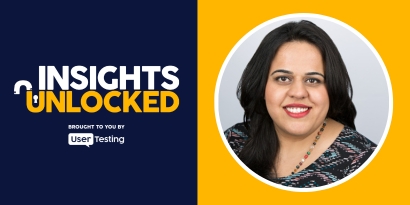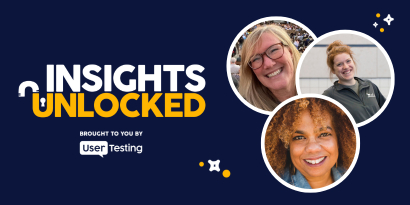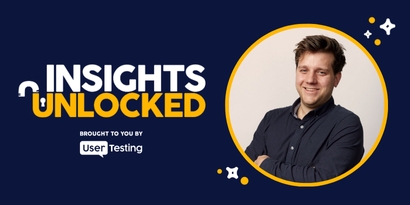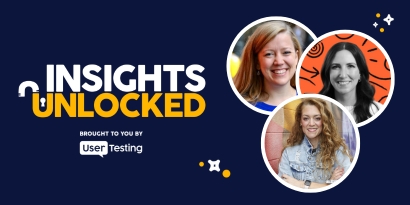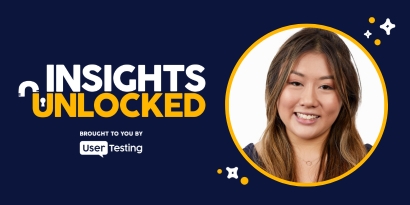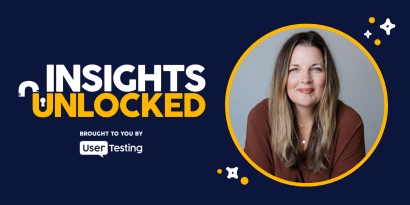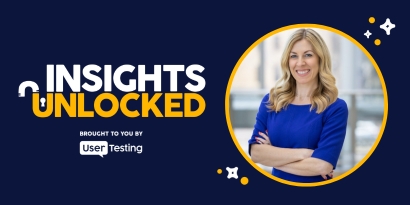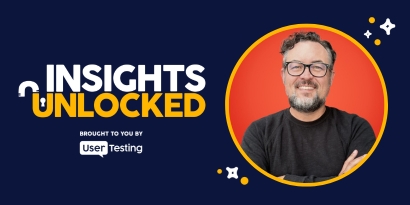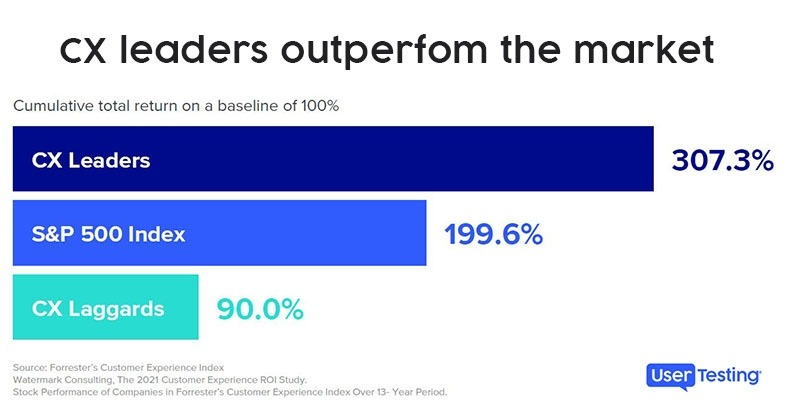
Episode 95 | October 09, 2023
How to get executive buy-in for experience research
In this week’s Insights Unlocked, UserTesting’s Chief Operating Officer Josh Maltz talks with UpTop's Craig Nishizaki about getting executive buy-in for experience research.
How to get executive buy-in for experience research
Teams often tell us they have trouble connecting the dots between business value and experience research.
Whether you’re a marketer, UX practitioner, or project manager, everyone should work to attach what they do to measurable business results.
In this week’s Insights Unlocked, UserTesting’s Chief Operating Officer Josh Maltz talks with Craig Nishizaki about getting executive buy-in for experience research.
Craig is head of business development at UpTop, a UX consultancy based in Seattle. He leads UpTop’s business development team and is responsible for new account acquisition and account development across a portfolio of clients including Amazon, Everbridge, F5, and Microsoft.
To tee up their conversation, we asked UX researchers in the UserTesting Contributor Network their thoughts on the challenges of getting executive buy-in on customer insights. Hear what they said in the video below.
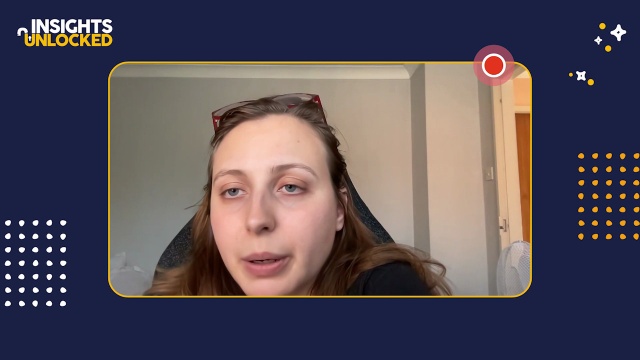
Why buy-in is important to a successful experience research program
Besides typically being a requirement, getting executive buy-in on your experience research program is important for a few reasons.
First, it ensures those UX initiatives remain a priority in the organization’s strategic plans. And with that comes the budget for both the personnel and tools needed to conduct that research.
Second, getting executive buy-in tells others that customer insights are a priority in the organization. That buy-in also frames all other initiatives through a customer-empathy lens.
And the results speak for themselves. Organizations that truly deliver customer-driven experiences outperform in the market.

Taking a tactical vs. strategic approach to executive buy-in
One reason UX professionals may have a hard time getting buy-in, Craig said, is that they’re getting too tactical, too soon.
“Instead of trying to understand the language, or convey the language of business, and stay at that higher level and really understand what they're trying to accomplish through the research,” Craig said. “I think taking a step back and just asking the question, what's the business's goal in all of this? And what's the real pain point that we're trying to understand?”
Overcoming barriers to executive buy-In
That said, there are still going to be challenges in getting executive buy-in on your customer feedback program. Craig buckets them into three groups: culture, mindset and bias.
From the culture perspective, Craig wants to know whether the organization is an innovative culture or are they an efficiency-driven culture?
“If they're innovative or innovation-oriented, then they're more interested or open to experimentation and ideation and looking for different insights,” he said.
If they're efficiency-driven, he said, oftentimes they're looking to cut costs or cut timeframes to delivery. And a lot of times, those are engineering-driven organizations. You'll hear things like, ‘Well, let's get it out there, let's ship, and then we'll test later,’” Craig said. “And the challenge there, oftentimes, is you've spent this time and effort to build something and test it later and it misses the mark.”
From a mindset perspective, Craig said, is the organization or key stakeholders within the organization open minded or closed minded? If they're close minded, do they need to be the smartest person in the room? Or are they open minded in terms of looking for other insights and looking for ideas that will help them move the needle?
And the third group is the bias, or the point of view, they have. This is more nuanced, Craig said. “A lot of times you'll hear it as ‘we've identified all the problems. We just need some help thinking through how we would execute on a solution.”
“And underlying all that,” Craig said, “If you think about it, what they're saying is: research is going to cost money. It's going to take time and we're going to find out what we already know. I think that bias, if you can identify it, then you can start helping them reframe their point of view in the process.”
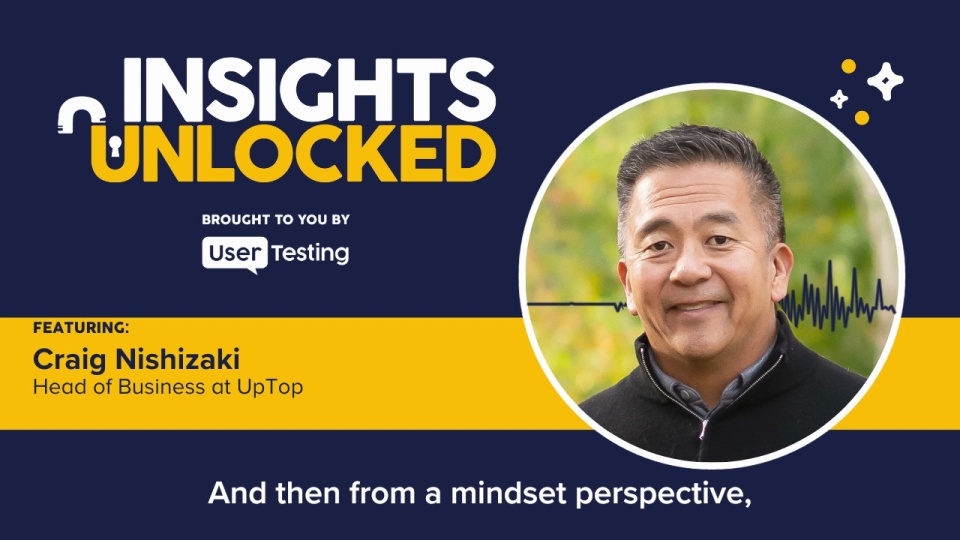
Connecting UX and experience research to business value
One of the challenges that teams have is understanding how to connect research and user testing back to business goals. “Start by thinking about it from their perspective,” Craig said. “What's the real business goal? What's the real problem they're trying to solve?”
Think of it as doing the research before the research. “And it boils down to, in a lot of cases,” he said, “How do they get their bonus to be able to really reframe the conversation so that they understand it.”
“If you take a step back and look at it from their perspective—any digital transformation, any product development that they're doing—the ultimate goal is to sell more, sell faster or be more profitable,” he said. “Depending on what the product is or what the solution is that they're trying to solve for, speak to them in that language.”
If the goal is to sell more, then look at how to improve conversion rates. If the goal is to sell faster, then focus your research on getting customers to engage with your content at a deeper level to then take them to the next step. And if the goal is to be more profitable, focus on how you can reduce customer support calls, for example, by having a better digital experience.
“I think you have to tailor those metrics that you're looking at to what those goals are that they're trying to achieve based on the business that they have,” Craig said.
At UserTesting, our customers generally align their research with three key business metrics:
- Reducing cost via a reduction in rework because you’re going to market with a better product-market fit
- Decreasing customer service costs, such as reducing the number of customer support tickets
- Driving revenue through increased conversion rates and customer lifetime value
Prioritizing where you put your efforts, Craig advocates areas where you can eliminate friction.
“If you could identify moments in the customer journey that are causing friction and then test those and improve those and iterate those along the way, you can have a bigger impact on the overall user experience and ultimately the customer experience,” Craig said.
Who in the organization should be involved in getting executive buy in?
Whether you’re an internal employee or someone on the outside selling into or consulting an organization, Craig said you need to look for three key stakeholders in the executive buy-in process: the champion, the influencer, and the executive sponsor.
The champion is the one that's going to be breaking down the doors for you on a daily basis.
The influencer is going to help you with the leadership across the organization.
And identifying the executive sponsor happens when you know what's going to move the needle for them within the business and how your experience research initiative enables that.
Enlisting executives early on in the process
Another tactic for gaining executive buy-in is to enlist them earlier in the research process. In our episode with C. Todd Lombardo, vice president of product and design at Openly, he suggests bringing in key stakeholders at the beginning, middle and end of an initiative rather than just delivering a report at the end. By doing that, they’ve had more visibility — and buy in — into the whole journey.
Craig suggests looking for some low-risk efforts that you can start with and ease them in so that you can get some quick wins. This could be sharing highlight reels from a moderated or unmoderated test with customers and having those executives hear first hand what is going well or wrong.
“Once they get a piece of actionable insights that create value, it’s hard for them to ever unsee that or go back,” Craig said. “And I think once you can give them a taste, then you can start going for bigger bites.”
Related articles and videos for getting executive buy-in
Looking for additional help or information on getting stakeholder and executive buy-in? Check out these related articles and on-demand videos from UserTesting.
- How to get executive buy-in for customer insight (on-demand webinar)
- How to get executive buy-in for Design Thinking
- Presenting your work to executives: 8 tips for UX designers
- How to get stakeholder buy-in for user research: expert tips
